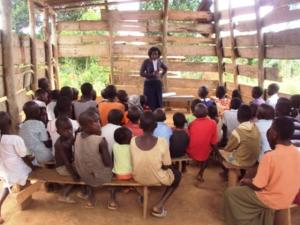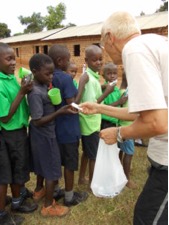In August 2017, the Western Peninsula of Freetown, Sierra Leone experienced torrential rain, a series of flooding events and a large landslide. Over 500 people passed away, over 800 people have been reported missing and many more families were rendered homeless. Entire houses were swept away by the flood waters.
Many individuals and organization sprang into action, helping to provide emergency food and water. As one of the organizations active in Sierra Leone, Develop Africa is helping to provide psychosocial counseling, emergency supplies and activities for the kids. This is helping to meet the immediate needs of the victims.
Changing Future Outcomes
Beyond the initial response, in Freetown and globally, there is active discussion on how we can possibly prevent a reoccurrence or at the minimum reduce the impact of future disasters. The same is being done with regard to hurricane Harvey and its impact on Houston, Texas. Changing outcomes demands understanding, strategic analysis, and action.
Worldwide, cities, including Freetown, are under the threat of urbanization. 54 % of the world’s population lives in urban areas. This proportion is expected to increase to 66 % by 2050 (UN, 2014). In the developing world, rapid and unplanned urbanization has resulted in dire and fatal consequences.
Due to inadequate city planning and housing, youths and migrants from the provinces are squatting in shanty towns in Freetown. They have built fragile shacks on the hillsides and in undesirable locations – often directly in river beds. Sadly, many locations have poor sanitation, no running water, limited or no hospital facilities, schooling etc. With thousands of people living in close proximity and squalor, diseases such as typhoid, Ebola, and cholera spread rapidly. These low-lying areas were the hardest hit by August flooding.
In Sierra Leone, deforestation has compounded the urbanization crisis. In the hills surrounding Freetown, trees and the vegetation have been indiscriminately cut down for firewood and unplanned housing. Deforestation is not only threatening biodiversity and ecosystem balance in the country but is also contributing to global climate change. In Freetown, the run-off water from the surrounding hills accentuates flooding and results in loss of property each year.
Fortunately, these challenges are not insurmountable. Here are a few thoughts on what we can do as global citizens that are committed to and looking for ways to make the world a better place.
1. Social Media For Good
Social media is a powerful and growing force that can help us tackle some of the world’s biggest challenges. The Arab Spring is an excellent example of how social media can help change the world.
“Social media has become an important tool for providing a space and means for the public to participate in influencing or disallowing environmental decisions historically made by governments and corporations that affect us all. It has created a way for people to connect local environmental challenges and solutions to larger-scale narratives that will affect us as a global community,” says Shannon Dosemagen.
In late August 2017, social media played an important communication role during Hurricane Harvey in Texas. FaceBook and Twitter posts alerted authorities and volunteers on where help was desperately needed, acting as an alternative to 911 calls.
Rightly applied, social media can be a powerful force in highlighting the problems associated with urbanization. WhatsApp messages, Facebook videos/posts, billboards etc. can help to inform and educate the public on the dangers of dwelling in perilous and risk-prone areas. Online petitions, videos, and environmental studies can help to raise awareness of the perils and apply pressure on the government to take corrective action. An empowered public needs to realize that united, with the right tools, it can compel the government to take the necessary action.
As global citizens, we can promote awareness of the dangers of living in protected and risk-prone areas. We could help create educational content that will be shared on social media. We could also help organize online/offline accountability groups or set up agencies that will apply pressure on governments to provide alternative housing opportunities.
2. Reverse Urbanization:
One of the driving forces behind urbanization is the attraction of opportunities in urban areas. With that in mind, a key response would be the development of opportunities in new and strategic rural areas. Governments, NGO’s and individuals can help redirect migration by creating attractive mini-cities outside of the urban areas. When jobs, housing, hospitals, and schools are available outside the large cities, youths will be attracted to these locations.
As global citizens, we can help for instance by teaming together to launch or support new businesses, offering employment in rural areas. This could be for example helping to support a farm or setting up a processing plant that will preserve perishable harvests. One of the most sustainable methods of aid is investing in microfinance or micro credit opportunities. This cash injection helps small businesses to start or expand. It creates jobs and enables people to become self-sufficient. \
We could also volunteer our time helping to build new houses through organizations offering a Habitat for Humanity type of service. Volunteer service in rural schools, hospitals etc. will help to strengthen rural communities and make them more attractive to youths. In this regard, the Peace Corps should be highly commended for their efforts in supporting rural institutions. Furthermore, we could consider working full-time for a nonprofit organization/charity that addresses the challenges of urbanization.
3. Every One, Plant One Tree a Year
Throughout the planet, there is a growing need for reforestation and more green-friendly neighborhoods. Degradation and deforestation of the world’s tropical forests are cumulatively responsible for about 10% of net global carbon emissions (REDD+). According to the watchdog group Global Forest Watch, Sierra Leone has lost nearly 800,000 hectares of forest cover in the past decade, with loss accelerating in 2015.
Imagine what would happen if we could mobilize everyone over the age of 15 (for example) to plant one tree every year! As a global citizen, we can help to keep forefront in everyone’s minds the need for us all to take better care of the earth. We can promote online and offline the need to plant trees, to recycle and to make decisions that protect the earth.
In Freetown, there is the dire need to restore vegetation by planting trees in the surrounding hills. As a volunteer group, we could raise funds for a trip to plant 200 trees over 2 weeks. Alternatively, we could donate funds to cover the cost of purchasing seedlings and other tree-planting expenses.
In Freetown, by restoring vegetation and the forest, we will be helping to combat global warming. These efforts will help to reduce runoff water from the hills. The trees will help to reduce landslides and rock slides that have resulted in the loss of life. Reforestation is essential for the overall health and quality of life of the community.
In summary, the challenges of urbanization are real. With creative solutions, strategic planning and bold action, we can all do our part to mitigate the consequences of urbanization … and make the world a greener, safer and better place – for us all.
We invite you to join Develop Africa in providing hope to flood-affected victims by making an individual or business donation today.
Sylvester Renner
President
Develop Africa
Twitter: @SylRenner
LinkedIn: https://www.linkedin.com/in/sylrenner
www.DevelopAfrica.org
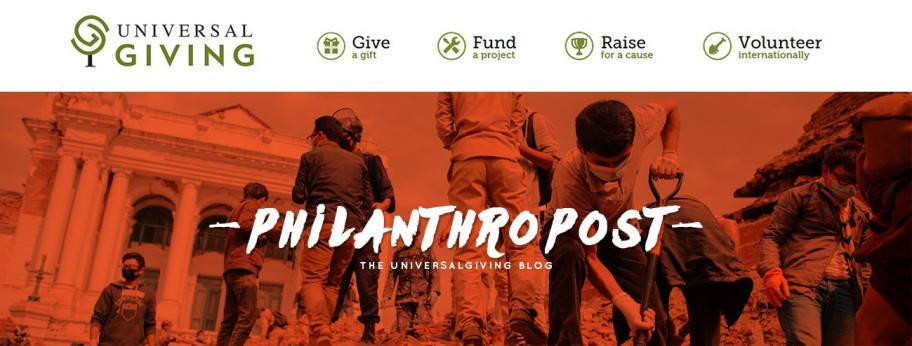
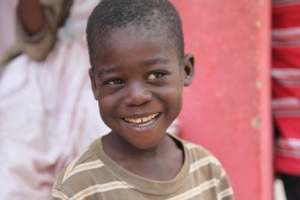 Poverty is nothing short of an epidemic in Haiti – it is the poorest country in the Western
Poverty is nothing short of an epidemic in Haiti – it is the poorest country in the Western 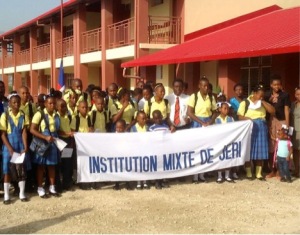 After many years of dreaming, planning, and persisting, construction on the Father Jeri School
After many years of dreaming, planning, and persisting, construction on the Father Jeri School 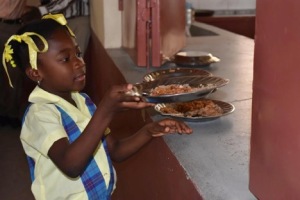 enduring spirit of the Ti Plas Kazo community as they create their own change, becoming a source of hope and pride for the entire country. They see a future where all Haitians can grow out of the cycle of poverty and hold the tools to create their own path. And they believe people from all backgrounds and places can come together in solidarity with Haiti, to create change one small step at a time.
enduring spirit of the Ti Plas Kazo community as they create their own change, becoming a source of hope and pride for the entire country. They see a future where all Haitians can grow out of the cycle of poverty and hold the tools to create their own path. And they believe people from all backgrounds and places can come together in solidarity with Haiti, to create change one small step at a time. These women have had the life-transforming opportunity to build businesses, homes, and freedom with the
These women have had the life-transforming opportunity to build businesses, homes, and freedom with the 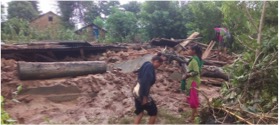 losing everything. At least 150 girls have lost their homes and 250 are badly affected. They were running thriving businesses (food carts, cafes, grocery shops, seamstress, goat and pig farming) with training from NYF. With their communities devastated and their businesses wiped out, their futures look bleak without our help.
losing everything. At least 150 girls have lost their homes and 250 are badly affected. They were running thriving businesses (food carts, cafes, grocery shops, seamstress, goat and pig farming) with training from NYF. With their communities devastated and their businesses wiped out, their futures look bleak without our help. 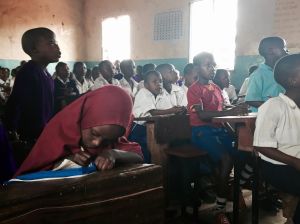
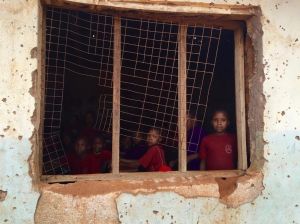

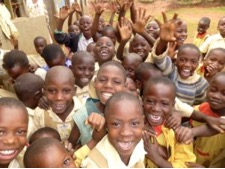
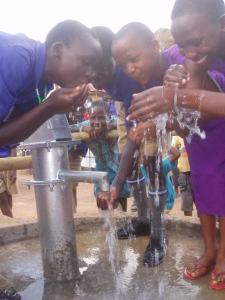 the importance and main elements of hygiene-promotion and the complexities of delivering safe water and sanitation in an emergency.
the importance and main elements of hygiene-promotion and the complexities of delivering safe water and sanitation in an emergency.